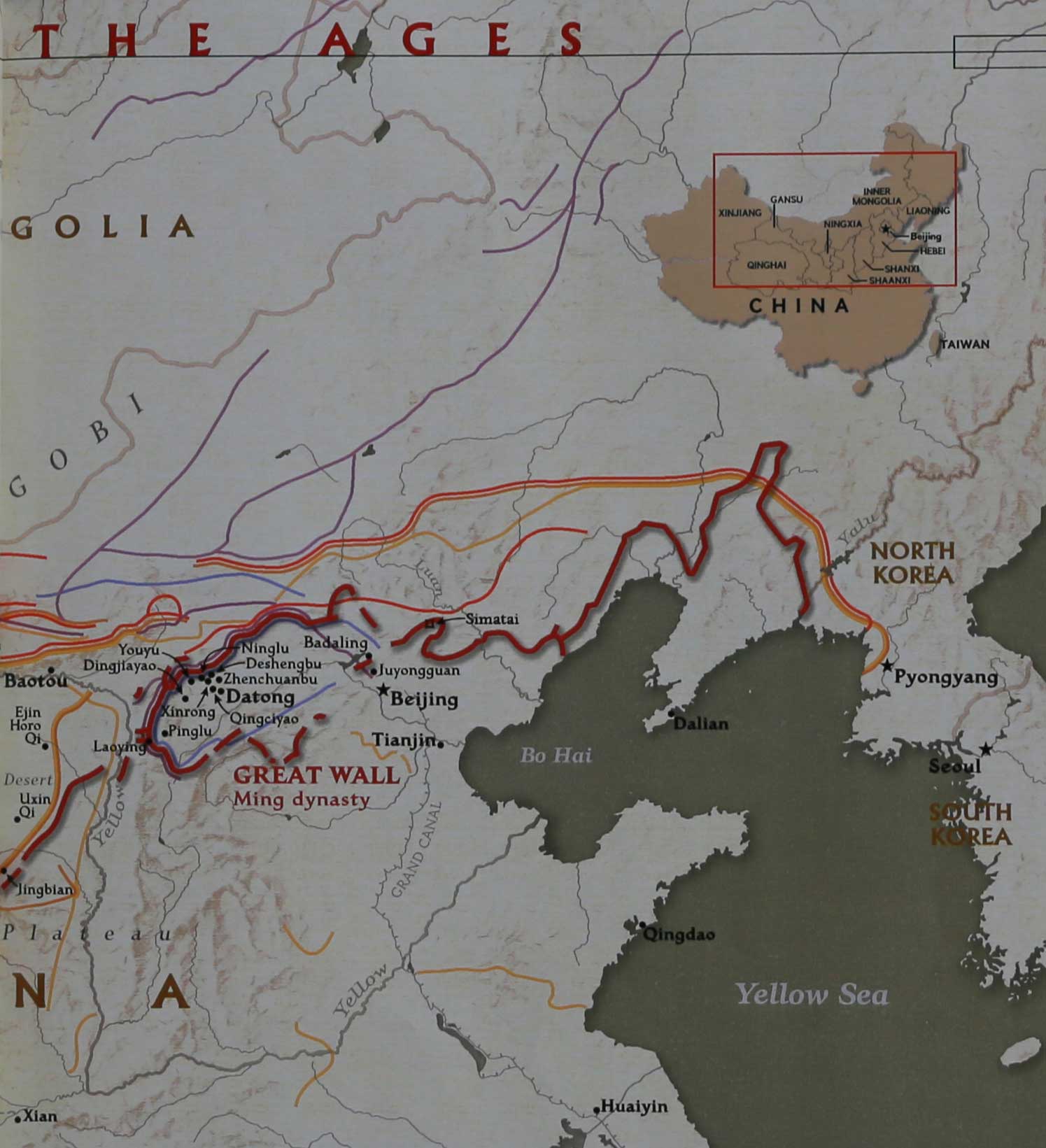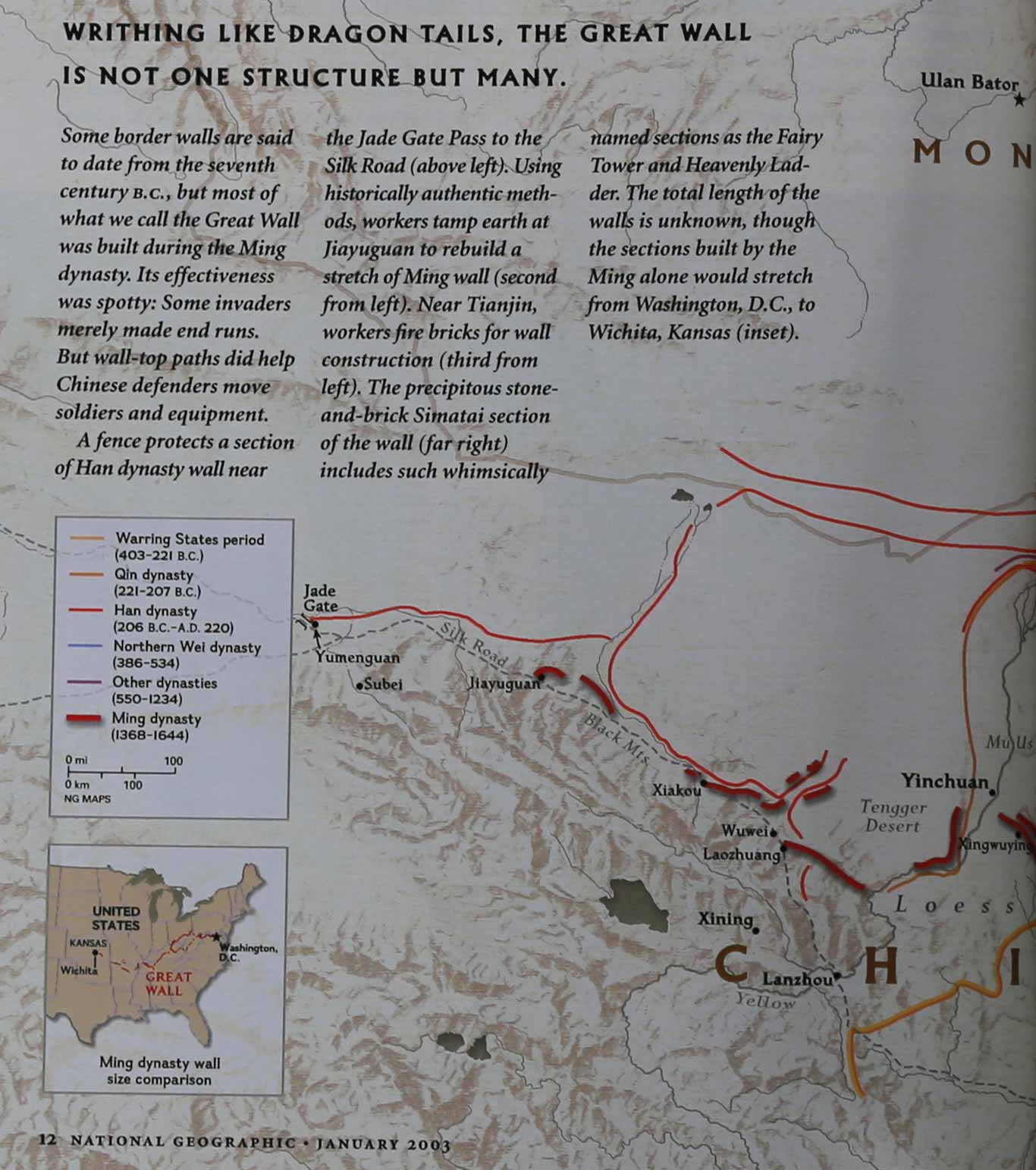The Great Wall of China
Conservation and protection
Great Wall history
Dynasties and construction periods
Features
Condition
Types of construction
Restored and original Great Walls
Restored and repaired sections
Great Wall experts
Great Wall replicas
Great Wall souvenirs
City walls
Other defensive walls
Suggested locations for day trips, short hikes, long hikes, thru-hikes, photography, and road trips
Highest points
Danger at the Great Wall
Photography
Museums
Cable cars, ski lifts, funiculars, toboggans, and ziplines
Mysteries
The Great Wall of China is a lot different from what many people imagine. But it’s truly amazing how little accurate knowledge most people have about it.
It's important to understand the nature of the Great Wall in order to plan your hike to provide maximum enjoyment. Unexpected surprises can diminish your experience on the Great Wall. Know what to expect and your time on the Great Wall will be more enjoyable and fulfilling.
The characteristics of the Great Wall are highly complex and vary greatly from place to place. It helps to know about how the Great Wall came to be in order to better appreciate this.
In many areas, the Great Wall began as a series of watchtowers situated at strategic points. Walls were later added to connect these towers in many areas, while some areas still only contain lines of towers.
Local materials were often used to build Great Walls. Where stones were available, the Great Wall was made of stone. Elsewhere, the wall was made of rammed (tamped) earth, often interwoven with layers of plants such as reeds that provided reinforcement. Many of these early walls have survived in surprisingly good condition.
Only in the late Ming Dynasty did repeated attacks inspire wall builders to use improved building materials. Piled stones were replaced with stones and mortar, and later brick walls with quarried stone foundations were used. The later walls were often built on top of existing walls, producing walls with several layers of reinforcement.
Over time, walls were repeatedly repaired, rebuilt, enhanced, and even completely replaced. More vulnerable areas were usually built or improved first, with less accessible areas attended to later, or not at all.
All of these factors have resulted in a Great Wall that varies greatly in design and construction from place to place.
The Great Wall can be considered as a complete system of fortifications including frontier walls, city walls, fortresses, watch towers, beacon towers, fences, and ditches.
The Great Wall has fortifications dating from many different periods and using a wide variety of design principles and construction techniques. All of them are fascinating in their own right as well as when considered as a whole.
 Map of Great Walls from various dynasties crossing northern China
Map of Great Walls from various dynasties crossing northern China
 Great Wall map
Great Wall map
 Great Wall map
Great Wall map